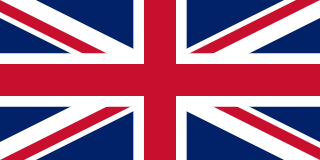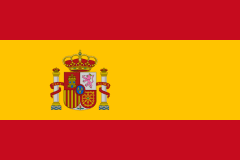







Kalliopi-Anna Poulia
Dr, MSc, PhD
Clinical Nutritionist-Dietitian
Laiko General Hospital of Athens, Greece
lpoulia@gmail.com
7.0 Diet and Fluids
Introduction
When kidneys do not function sufficiently the wastes and the extra fluids cannot be excreted properly. Your diet on Haemodialysis (HD) is important as it helps you to stay healthy and reduces common problems such as high potassium, high phosphate levels and fluid overload. The good news is that due to the increased frequency of Home Haemodialysis (HHD) the restrictions are often less.
Everyone’s needs are very individual and if you can talk to a dietitian (or a kidney health professional with diet knowledge) this will help. Taking a food diary will help them understand what you are eating. Your current blood results and other tests also show if you are eating enough of the right foods.
7.1 Energy intake
It can be hard for you to get enough nutrition on Haemodialysis. This means you can become malnourished (you do not get enough good nutrients and you can lose muscle). If you feel that your appetite is limited or that food tastes differently, especially a metallic taste with meat, you should ask for advice to make sure that your energy and protein needs are covered1,2.
If you are struggling to eat enough you should add high energy choices such as:
- Vegetable oil, predominately olive oil, margarine and butter.
- Cream.
- Protein powders.
Some people also need to start nutritional supplements but you will need advice about which supplements are right for you.
7.1.1 Protein
Once on Home Haemodialysis you need quite a lot of protein for your muscles and energy3. However animal proteins are high in phosphate, such as fish, dairy products, and cheese. More can be eaten if you do frequent Home Haemodialysis. Protein foods are high in phosphate so you may still need to take phosphate binders (medications that bind to phosphate in your gut)4.
When you are choosing protein increase foods rich in protein of “high biological value”, such as meat, poultry, soya and egg whites2.
7.1.2 Fat
Heart disease is also common with kidney disease5 so you should:
- Limit saturated fat intake by avoiding the skin of poultry and the fatty pieces of veal and pork.
- Avoid the use of butter, cream, animal fats and use polyunsaturated fats (like canola oil, sunflower oil) and monounsaturated fat instead (olive oil).
- Avoid frying as a cooking method and use roasting and boiling.
- Choose low fat cheese and dairy products6,7.
7.1.3 Carbohydrate
Carbohydrates are your main source of energy. If you have diabetes you should:
- Eat small and frequent meals, with carbohydrate content distributed throughout the day to achieve a better glucose control.
- In case of a hypoglycaemia you should choose honey, sweet candies, grape or apple juice to correct it. You should avoid juices from fruits high in potassium, such as orange or banana.
You should avoid alcohol intake with empty stomach as this raises their danger of hypoglycaemia.
7.1.4 Vitamins and trace elements
Everyone on Haemodialysis is prone to developing vitamin deficiencies due to the kidneys not working properly, restricted diet and dialysis losses2.
Water soluble vitamins
During Haemodialysis, some water soluble vitamins (i.e. vitamin C, and B complex vitamins) are lost during dialysis. Diet restrictions of vegetables and fruits reduce intake of folic acid and vitamin C. On Home Haemodialysis you can usually eat more fruits and vegetables but ask your doctor or your dietitian for advice about water soluble vitamin needs2.
Fat soluble vitamins
Haemodialysis patients cannot get rid of excess fat soluble vitamins (i.e. A, D, E, and K) and the toxicity risk is higher. Vitamin A deficiencies are rare. Therefore, supplemental use is not recommended. Daily needs should come from dairy products, fish oil and carrots2.
7.2 Sodium (salt)
Your kidneys have lost their ability to excrete extra fluids. This means you gain fluid weight between dialysis sessions. Gaining too much fluid can mean a high blood pressure and heart problems.
Sodium (salt) restriction is important to reduce thirst. You should try to:
Avoid:
- Avoid using salt in cooking.
- Avoid using extra salt in cooked meals and salads.
- Avoid smoked, salted and processed foods, sausages, snacks such as potato chips, crisps.
- Avoid salty cheese.
You can boost the flavor of dishes using spices and herbs such as basil, cinnamon, curry, garlic, mint and paprika.
Avoid eating salt substitutes because they are extremely rich in Potassium.
7.2.1 Fluid
You will be told what fluid restriction to have. Measure this amount in a jug or cups so you can see how much it is. You should count all fluids at room temperature in your restriction:
- Milk and water.
- Coffee and tea.
- Beverages, juices and alcoholic drinks.
- Ice cream and iced deserts.
- Jelly, creams and ice cubes.
- Soups, broth and sauces.
The following table shows how many fluid is in common kitchen utensils and cups.
| 1 tsp | 5 ml |
| 1 Tbs | 15 ml |
| ¼ of a cup | 60 ml |
| ½ of a cup | 120 ml |
| 1 cup | 240 ml |
| 4 glasses | ~ 1 litre |
If you feel thirsty, try:
- Drinking water only when you really feel thirsty.
- Rinsing your mouth with water and spitting it out.
- Using mouth wash for the prevention of bad breath smell.
- Adding some drops of lemon in your water to limit the sensation of thirst.
- Drinking your water very cold.
- Using ice cubes instead of water as they last longer.
- Using a water container with the permitted volume of liquids to have better control of your fluid intake8,9.
7.2.2 Potassium
The more Home Haemodialysis hours are done the more potassium that is removed. Therefore, the diet is more liberal, in terms of fruit and vegetable consumption. This makes it easier to eat fiber and prevent constipation.
If your blood results show a high potassium, you should reduce your potassium intake, choose foods lower in potassium, according to the following table.
| Low potassium | Medium in potassium | High in potassium | |||
|---|---|---|---|---|---|
| Fruits | Vegetables | Fruits | Vegetables | Fruits | Vegetables |
| Grape juice | Lettuce | Apple | Cabbage boiled |
Banana | Celery |
| Lemon | Cucumber | Watermelon | Carrot | Kiwi | Okra |
| Lemonade | Pepper | Cherries | Artichoke | Nectarine | Potato |
| Pear boiled |
Green beans | Pineapple | Mushrooms | Orange | Tomato |
| Plums boiled |
Eggplant | Grape | Onios | Apricots | Spinach |
| Mangel | Pear | Cauliflower | Melon | Zucchini | |
| Cardamom | Raisins | Peas | Figs | Asparagus | |
| Strawberry | Radishes | Beetroot | |||
| Grapefruit | Corn | ||||
| Broccoli | |||||
You should also avoid:
- Chocolate.
- Coffee.
- Peanut butter.
- Praline.
- Whole wheat cereals.
- Salt substitutes as they are rich in Potassium chloride.
To further limit the potassium content of fruits and vegetables try:
- Peeling fruits and vegetables that can be pealed, for example potatoes, tomatoes, carrots, apples and pears.
- Cutting fruits and vegetables in very small pieces before you consume them.
- Leaving vegetables in fresh water for at least two hours before cooking them. Rinse them before you cook them.
- Boiling vegetables for 5 minutes in a big pot and then change the water and continue cooking for the rest of the time needed.
7.2.3 Phosphate
Phosphate content is high in protein and dairy foods2. High blood phosphate levels are common when you are on Haemodialysis. More Haemodialysis will remove more phosphate so you can eat more.
Hints to keep your phosphate normal:
- Follow the instructions of the medical team about your phosphate binders.
- Avoid consuming extra dairy products, cheese, and deserts with milk.
- Avoid small fish, sea food and offal as they are rich in phosphorus.
- Do not drink cola beverages.
- Avoid legumes and whole wheat cereals.
7.3 Talk to a dietitian
Eating the right diet to stay healthy on dialysis can seem tricky. Everyone is different. Try to get personalised advice from a dietitian. Your regular blood results, your fluid gain between dialysis and your energy levels will help tell you if you are getting it right or not. If you do not have access to a dietitan ask the nurses if te have any useful information to help you.
Also remember it is important to have a treat every now and again. Having treats on dialysis is one way to lessen the impact of the extra potassium and phosphate.
References
- K/DOQI. Clinical practice guidelines for nutrition in chronic renal failure. K/DOQI, National Kidney Foundation. Am J Kidney Dis. 2000; 35: S1-140.
- Fouque D, Vennegoor M, ter Wee P, et al. EBPG guideline on nutrition. Nephrol Dial Transplant. 2007; Suppl 2 ii45-87.
- Ikizler TA, Flakoll PJ, Parker RA, Hakim RM. Amino acid and albumin losses during hemodialysis. Kidney International. 1994; 46: 830-7.
- Ipema KJ, van der Schans CP, Vonk N, et al. A difference between day and night: protein intake improves after the transition from conventional to frequent nocturnal home hemodialysis. J Ren Nutr 2012 May;22(3):365-72 doi: 101053/jjrn201108010 Epub 2011 Nov 4.
- Fort J. Chronic renal failure: a cardiovascular risk factor. Kidney International. 2005; 68 S25-S29.
- Spanner E, Suri R, Heidenheim AP, Lindsay RM. The impact of quotidian hemodialysis on nutrition. Am J Kidney Dis 2003 Jul;42(1 Suppl):30-5.
- Khoueiry G, Waked A, Goldman M, et al. Dietary Intake in Hemodialysis Patients Does Not Reflect a Heart Healthy Diet. J Ren Nutr. 2011; 21: 438-47.
- EDTNA/ERCA. European Guidelines for the Nutritional Care of Adult Renal Patients. 2002.
- NKF, editor Pocket Guide to Nutrition Assessment of the Patient with Chronic Kidney Disease. NY: National Kidney Foundation, 2009.
EDTNA/ERCA Secretariat
E-mail: secretariat@edtnaerca.org



